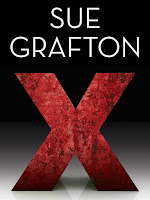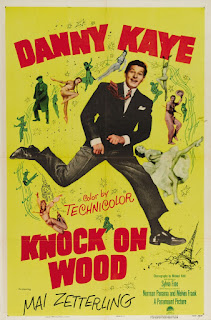1. AOTW--No one emerged to earn this coveted award this week. Must be the season?
2. I finished a few books this week--not because I read them quickly but because I read them slowly, picking away, a chapter or so a night, and it just happened that I finished three in a single week.
- X, by Sue Grafton, one of her remarkable Kinsey Millhone mysteries. I started reading them with G Is for Gumshoe and have enjoyed most all of them, though I found myself with this one a little slow to get engaged. One of the things I like about her sequence of novels: They take place in "real" time. The first of them A Is for Alibi, is set near its publication year (1982) (by the way, just checked on ABE: a 1st edition of that book is listing for $7500!), and the other novels continue as if they were occurring in real time. I like this. Robert B. Parker got in a bit of a bind with his Spenser novels, for we learn in the early novels that Spenser had fought in the Korean War. This made him impossibly old later on, so Parker dropped references to Korea. (Michael Connelly has had a similar issue: his LA detective, Harry Bosch, was in the Vietnam War ... making him a bit old for his doings now.)
- Anyway, Grafton also (in X) has a subplot about a fierce water shortage in California ... sound familiar?
- Glad I read it--but not my favorite.
- Twenty Years After by Alexander Dumas (1845), a sequel to The Three Musketeers. I first read this story in its Classics Illustrated comic-book version when I was a boy, so I finally got around to reading it (on Kindle). The four heroes reunite and get involved in trying (failing) to rescue England's Charles I from his beheading. And some other messes. Not as much swordplay, but still fun to read--and I recently ordered the Classics Illustrated comic from eBay; I'll let you know ...
- This History and Adventures of an Atom, by Tobias Smollett (1769), my least favorite of all the Smollett novels (I've now read them all). It is a dense (but mercifully brief) tale told by a single atom about a complicated political and military struggle between Japan and China--but it's really a satire about English politics in the 18th century. My poor eyeballs filed a grievance after I made them read it. BUT: I did just acquire a copy of Smollett's snarky travel book (Travels Through France & Italy, 1766); I started it last night and am enjoying his curmudgeonly comments--and will share some later.


3. This week we watched a documentary (streaming Netflix)--The Best of Enemies (2015), about the 1968 debates between William F. Buckley, Jr., and Gore Vidal during the political conventions that year, the campaign that saw Nixon defeat Humphrey.George Wallace was also in the race. (Link to trailer.) It was fun to see the two younger Lions--Buckley on the Right, Vidal on the Left--sparring about the candidates and about the situation in America (at the Dem convention, riots occurred in Chicago, which hosted the convention that year). Naturally, there's some focus on that astonishing moment when Buckley erupted, called Vidal a "queer," and said he was going to punch him in the face.
Some of the documentary's commentators talked about how this was the time when American news organization began to realize that pitting polarized pundits (like that triple p?) against each other was a winner, and we are living with the consequences. ABC, which hosted the events, was well behind CBS and NBC--but these encounters greatly boosted their ratings.
4. This week, Joyce asked me about the expression knock on wood: Did I know its origin? Nah. But I do now--well, insofar as anyone really knows. In the Morris Dictionary of Word and Phrase Origins (1977) there are several paragraphs about the saying, beginning with "There are several theories ...." The first--from the children's game of tag (touching a tree makes you safe); the second--"the Biblical theory" ("the wood symbolizes the cross"); the third--back to ancient times "when druids and other spirits were thought to live in trees"; rap the trunk of a tree & get some help; the fourth--an Irish legend about knocking on a tree to thank the leprechauns; the fifth--the "Jewish version" that dates back to the Inquisition in the 1490s: knocking on the wood of the synagogue door helped fleeing Jews find sanctuary. The entry ends with this: "Take your choice of these five theories--but be sure to knock on wood so you will pick the right one" (330-31).
And in the course of my research, I discovered a 1954 film by that name (with Danny Kaye). It's the story of a ventriloquist whose dummy seems to wish to destroy any amorous relationship the ventriloquist experiences--but of course, it's the ventriloquist himself who has love "issues." Then some spies get involved (the mid-1950s and the Commie Craze)--and a lovely psychiatrist who takes on Kaye. Sounds like something you really (don't?) want to miss? You can watch the whole thing (1:44) on Amazon Video--maybe I will? It's "free" via Amazon Prime (and YouTube). Here's a link to a scene from it on YouTube.
Joyce and I did watch it (some on Friday night, some on Saturday), and I actually enjoyed it a lot more than I thought, Danny Kaye was fun; the spies were ludicrous ... all so very Fifties. There's a musical number "Knock on Wood" which is sort of touching. But, of course, I'm very susceptible to being "touched" these days ...
5. It's our 46th wedding anniversary. No luckier man ever lived. Married in Akron, Ohio (in Concordia Lutheran, which Joyce's ancestors, stonemasons, helped build), we honeymooned in New Orleans, where we took a riverboat up into Bayou country (Joyce was already at work on Kate Chopin), then headed home the long way--via Hannibal, Missouri, to see some Twain things and Des Moines, Iowa, to surprise my parents with a visit. Then home to Kent, Ohio, 323 College Court, only a block or so from campus, where we continued our graduate work and from where I drove every day to my job teaching 7th grade English at Aurora Middle School.
The journey ever after, for me, has been magical ...








No comments:
Post a Comment